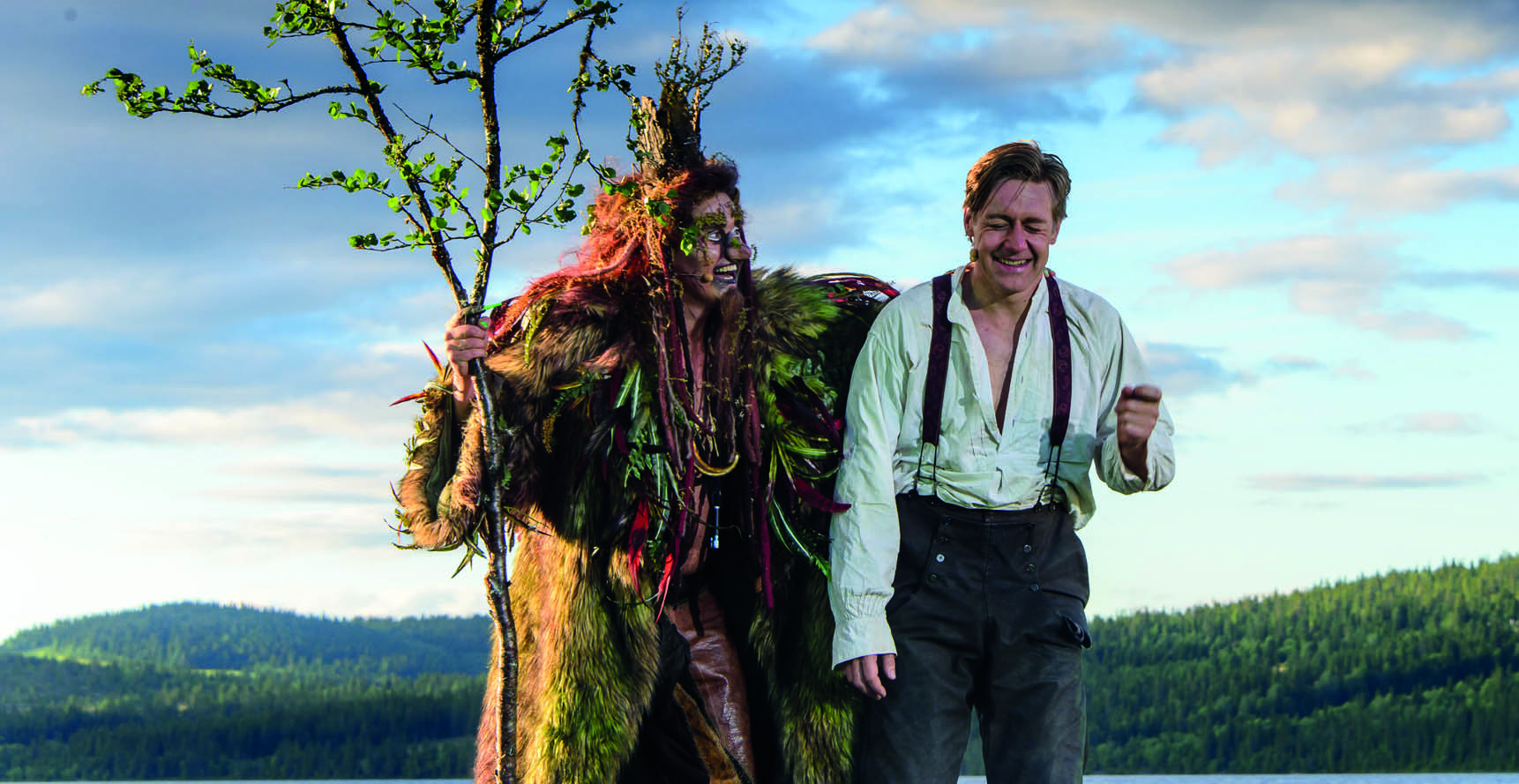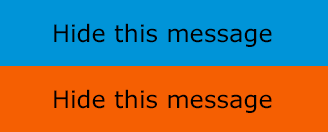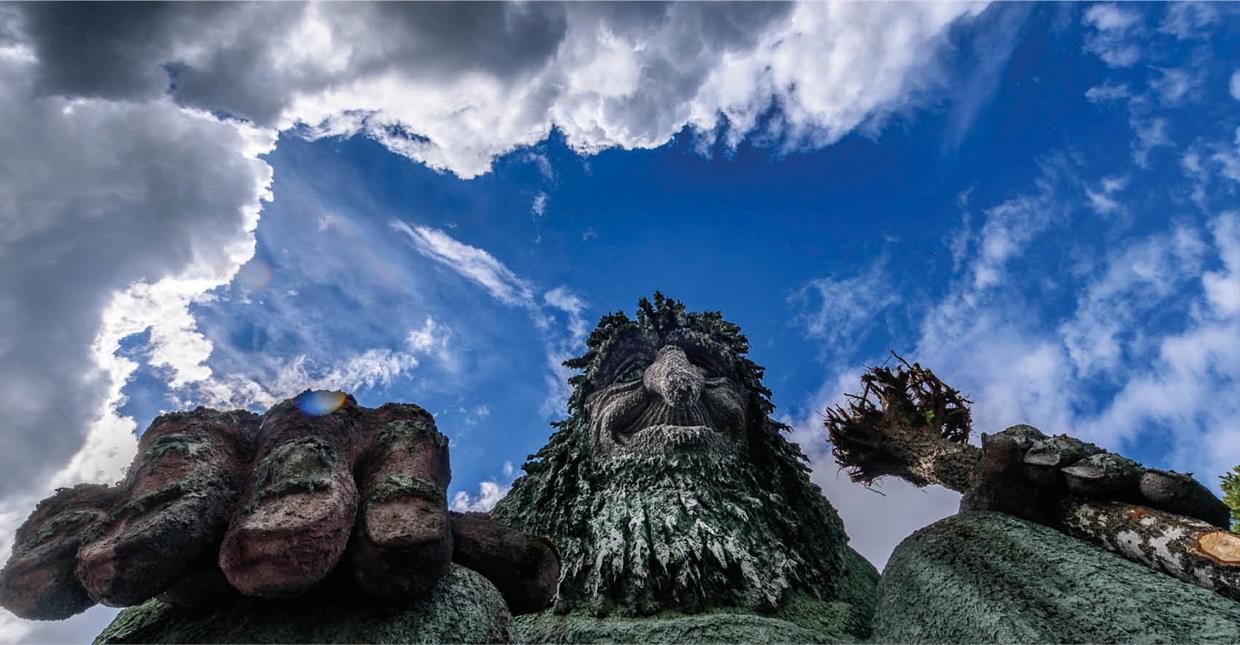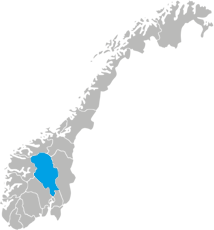Troll
Troll is a term used to describe various supernatural beings in Nordic folklore and storytelling traditions, and has roots in Norse mythology. Both appearance and characteristics can vary, but the creatures are often both dangerous and stupid. They tend to live in wilderness and areas inaccessible to man, such as mountain caves, dense forests and the ocean.
The troll legends are many and very old. Those we are familiar with today feature in fairytales and folklore – in particular in Asbjørnsen and Moe's Norwegian folk tales from 1844 where the trolls often are the main characters.
Trolls were often described as strong, evil and dangerous giants. They were ugly, with large noses and eyes "the size of plates", and often had several heads or just one eye. Gods and humans were their enemies, and they were angered by the “smell of Christian blood”. Most lived in the mountains or in a distant, cold country, but trolls living in the ocean or forest also existed.
Hunderfossen Family Park, with trolls and legends as its theme, is the country's very own fairytale adventure park. The Hunderfossen troll towers 14 metres above ground, and is one of the most photographed in the world.
 Peer Gynt’s troll
Peer Gynt’s troll
Trolls featured in Nordic literature, art and music during the Romantic period in the 1800s as well as later on. The most famous are maybe those in Theodor Kittelsen's fairytale illustrations and in Henrik Ibsen's dramatic poem Peer Gynt from 1867.
Inspired by Peer Gynt, Kittelsen drew his trolls with a cow's tail. In the poem, the main character meets trolls and mythical beings in Dovregubben's hall inside the mountain. The various creatures differ in appearance, such as having pigs' heads etc., but all the trolls have tails and this is something Peer will also get if he does "not leave the mountain, but shun the daylight". Traditionally, the tail was associated with the Hulder who belonged to a different "species", and Ibsen's play is believed to be the first time the trolls have tails.
Furthermore, Ibsen's troll king, Dovregubben, is not as stupid as trolls usually are. He asks Peer to figure out what the difference is between troll and man. The trolls have the saying "Be true to yourself, and to Hell with the world", and Peer Gynt adopt this as his motto.
Experience the Peer Gynt play at Gålå the first week in August.

Nøkken (the Neck)
In old legends, the neck is a water spirit depicted as a frightening, evil creature which is related to both demons and the people of the underworld. He lives by the water's edge, and lures humans and animals into the water – especially after sunset, and is particularly dangerous to babies who have not been christened and pregnant women. However, he can also be a sad creature living in loneliness and complaining about not being able to receive salvation and go to heaven.
In the old tales, the neck is associated with luring people into the water to drown them, or as a ghost of the sea foreboding drownings, suicide, deaths and bad weather with his ugly screams or mournful groans. Many of the legends claim that the neck requires a victim every year before he is satisfied. In some stories he grabs hold of the ones about to drown and does not let go, and in others people drown and end up in beautiful green halls on the seabed.
These scary stories about the neck served two purposes. They kept children and the young away from dangerous lakes, wild animals and people they did not know, and were also a way to explain and deal with tragic drowning accidents, the unknown and the forces of nature.
The neck is often invisible, but can be shaped like a piece of wood, a raft or something else floating around. He may also go on land and take the shape of a horse or a person the get hold of his victims. Often he appears as an attractive young man, maybe a fiddler, with long hair, who seduces young women and lures them to their death. In many stories, the neck features in the shape of a stunning pale grey horse. He uses enchanting song and music to spellbind his victims. He is sometimes a fiddler, and sometimes he plays the harp.
Huldra (the Hulder)
In Norwegian folklore, the Hulder is a supernatural seductive female creature. The plural form, huldrer, is also used for the people of the underworld. In recent history, she is a young girl with thick golden hair and a cow's tail. This is an image created by Norwegian artists illustrating supernatural creatures in the 1800s. In descriptions dating further back, she varies in appearance.

.png)
.png)












#visitlillehammer